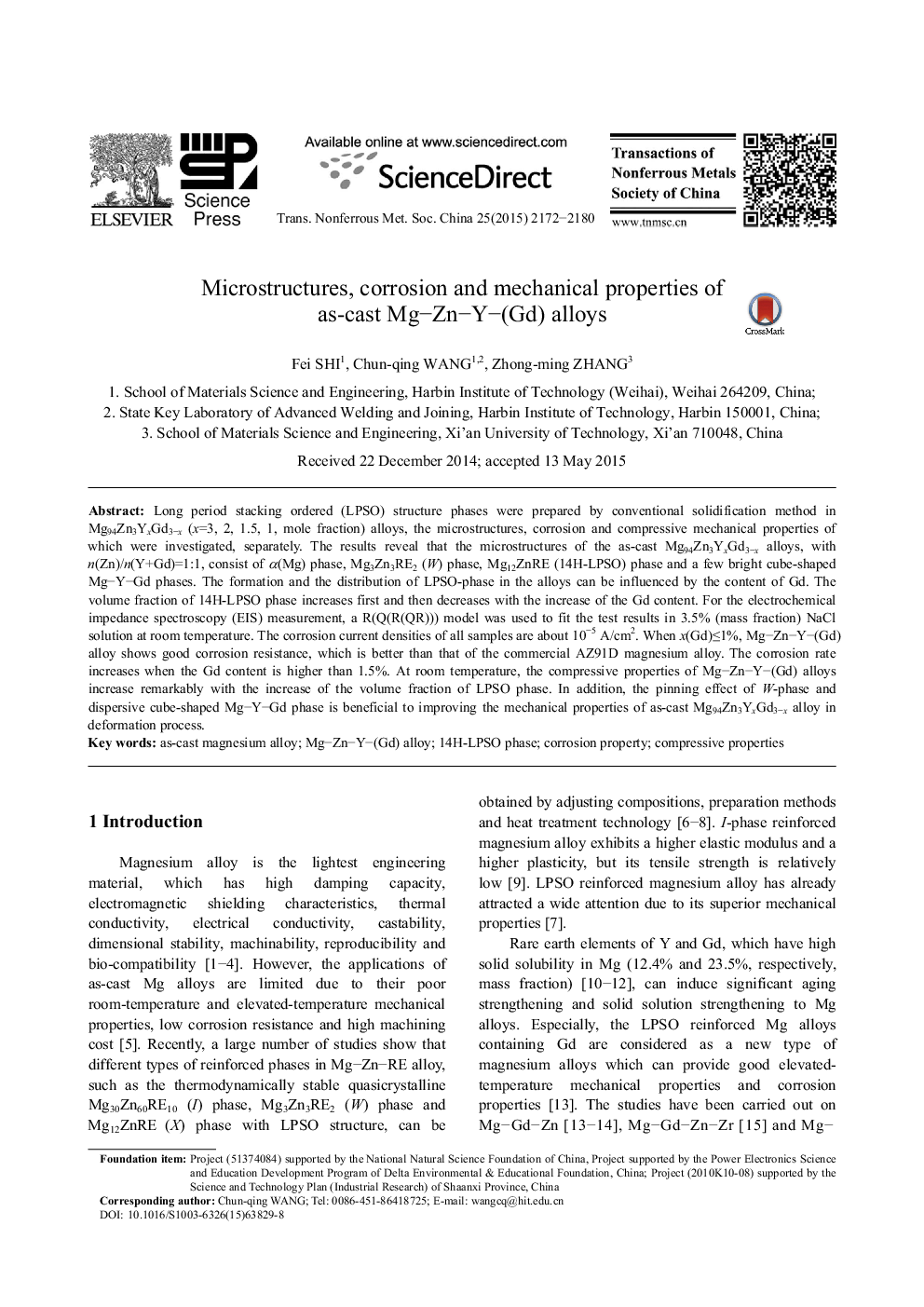| Article ID | Journal | Published Year | Pages | File Type |
|---|---|---|---|---|
| 1636213 | Transactions of Nonferrous Metals Society of China | 2015 | 9 Pages |
Long period stacking ordered (LPSO) structure phases were prepared by conventional solidification method in Mg94Zn3YxGd3–x (x=3, 2, 1.5, 1, mole fraction) alloys, the microstructures, corrosion and compressive mechanical properties of which were investigated, separately. The results reveal that the microstructures of the as-cast Mg94Zn3YxGd3–x alloys, with n(Zn)/n(Y+Gd)=1:1, consist of α(Mg) phase, Mg3Zn3RE2 (W) phase, Mg12ZnRE (14H-LPSO) phase and a few bright cube-shaped Mg–Y–Gd phases. The formation and the distribution of LPSO-phase in the alloys can be influenced by the content of Gd. The volume fraction of 14H-LPSO phase increases first and then decreases with the increase of the Gd content. For the electrochemical impedance spectroscopy (EIS) measurement, a R(Q(R(QR))) model was used to fit the test results in 3.5% (mass fraction) NaCl solution at room temperature. The corrosion current densities of all samples are about 10−5 A/cm2. When x(Gd)≤1%, Mg–Zn–Y–(Gd) alloy shows good corrosion resistance, which is better than that of the commercial AZ91D magnesium alloy. The corrosion rate increases when the Gd content is higher than 1.5%. At room temperature, the compressive properties of Mg–Zn–Y–(Gd) alloys increase remarkably with the increase of the volume fraction of LPSO phase. In addition, the pinning effect of W-phase and dispersive cube-shaped Mg–Y–Gd phase is beneficial to improving the mechanical properties of as-cast Mg94Zn3YxGd3–x alloy in deformation process.
